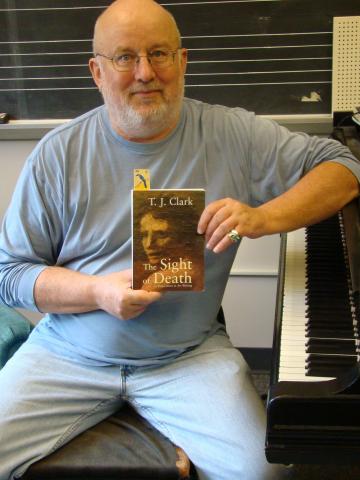
I read a lot of art history and criticism partly because I like it, and partly because art scholars seem able to write simultaneously for the professional and non-professional, something less common among music historians. Part of this, of course, is that the painting sits there while you look at it, and can be more or less well reproduced in the book; whereas music moves through time, and to pinpoint specific moments, we musicians often have to have recourse to isolated notated examples, or refer people who can read music to the score. Even so, reading what and how art scholars write is often very helpful to me in my own work.
The Sight of Death is a chronicle of Clark’s going to look every day for two months at two paintings of Poussin (1594?-1665), Landscape with a Calm and Landscape with a Man Killed by a Snake, in early 2000 hung in the same room of the Getty Museum in Los Angeles. It’s a sort of diary in which Clark’s responses to the paintings, which he noted daily, vary according to the lighting in the room (i.e., the time of day, natural or artificial light), to his moods and to the cumulative effects of his daily visual, visceral and intellectual reactions to the artworks. Then as these effects crowd and linger in his mind, he also moves into an even more basic consideration, the “experiment” of his subtitle, thinking deeply about how we look at art (works are static, we are not), why we do so, what happens when we do so repeatedly, and ultimately what the relationship of human beings to art is or can be. I don’t know yet how it comes out, but it’s worth the trip.


It’s definitely good enough for me! JMcC has been recommending worthwhile books, movies, and music to me for (hmmm. . . ) let’s just say many years now. He has wonderful and eclectic taste.
Tricia Welsch